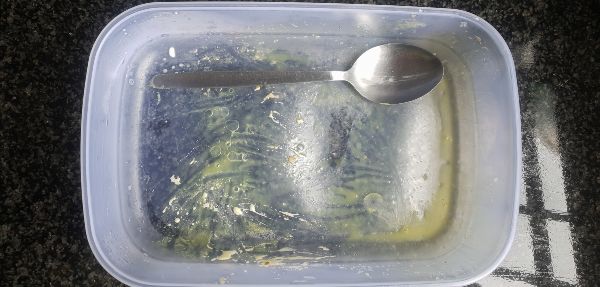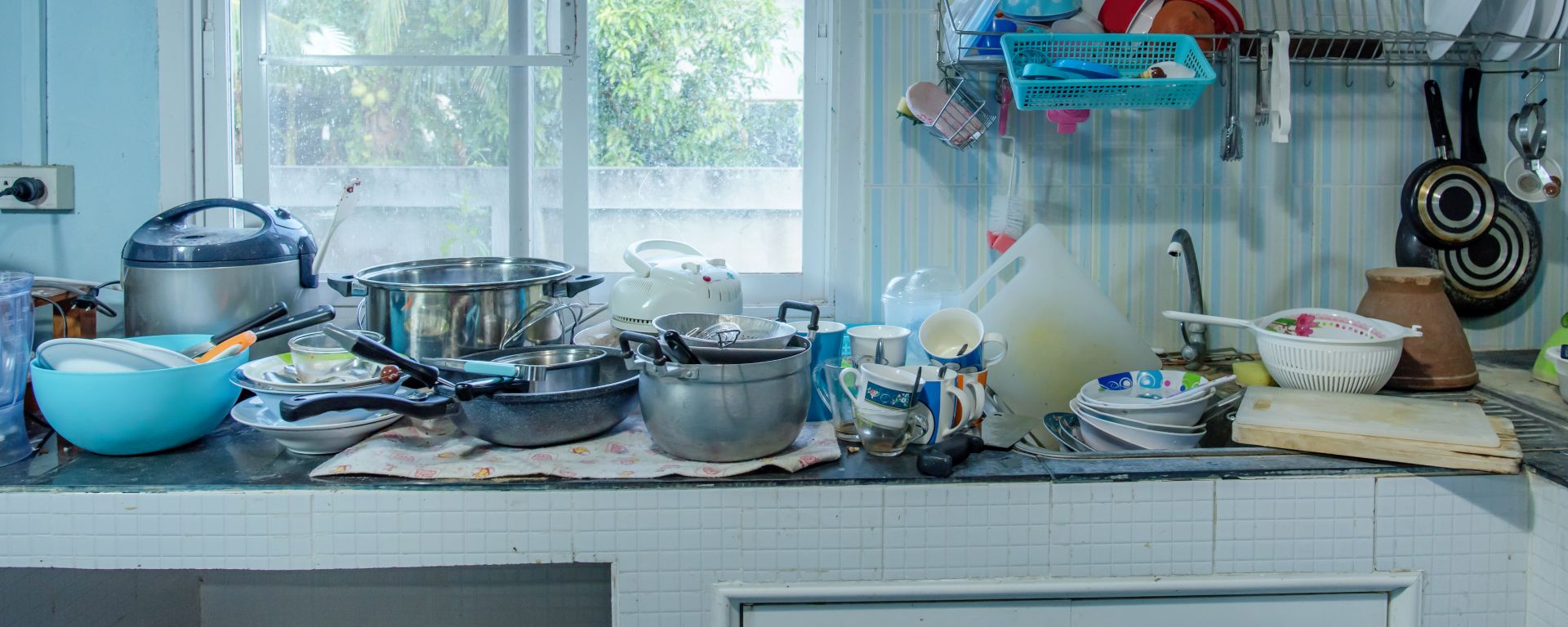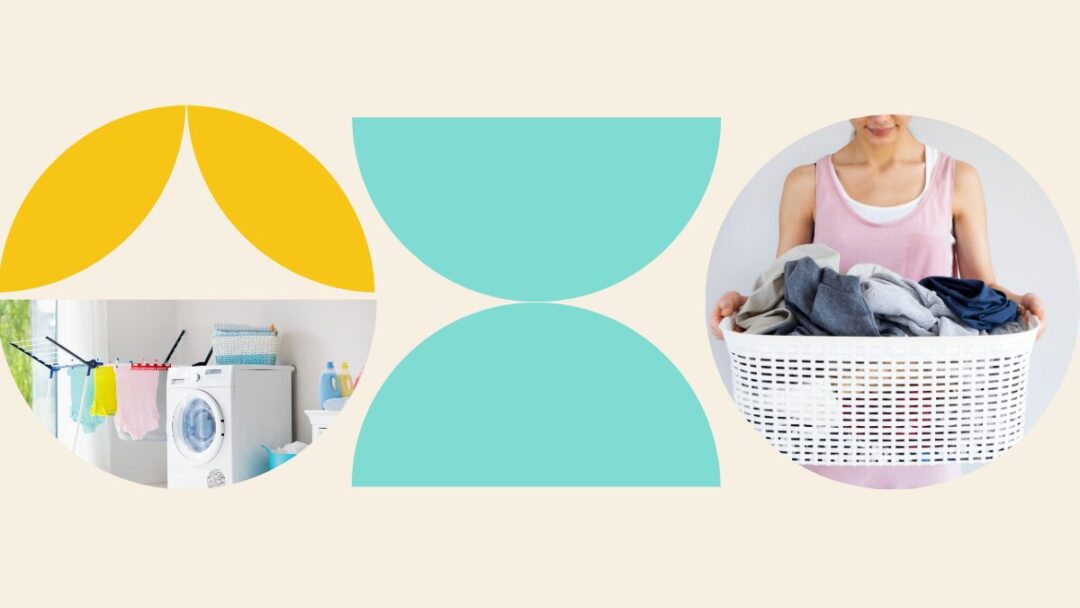The kitchen is a common area for illness-inducing bacteria like E. coli, salmonella, and coliform. It’s the perfect place for bacteria and these microorganisms to grow, surprisingly, even more than the regular bathroom. It makes sense if you think of the number of people who pass through the kitchen and the amount of raw food that gets prepared in it. We have listed the most common facts about kitchen germs, and the areas they’re usually found in. To help you get rid of germs and bacteria in your cooking area, we have also given you cleaning tips for each of the following 10 areas in your kitchen that are breeding grounds for germs.
1. The Kitchen Sink
The kitchen sink is, most of us would think, the last place to be infested with germs. However, it usually contains more germs than the inside of your toilet. Despite how clean it may look, the sink often hosts various illness-causing bacterias such as salmonella. The residue from raw meat washed off the chopping board and knife is usually the top cause of bacteria building up in the sink and drain. This bacteria clings onto the tap, drain, and surface of the sink when combined with other food waste and water.
Flush the drain weekly or twice a week with hot water and bleach, or vinegar and baking soda. The basin of the sink should be disinfected at the end of each day. If your sink drains slowly or has an unpleasant smell coming from it, you may want to contact a plumber.
You can learn the best way to clean the kitchen sink here.
2. Reusable Containers

Plastic food storage containers and reusable shopping bags are great for storing food for the next day, or storing dry goods. But, they’re also great for housing germs. Especially containers that have rubber seals, these seals usually contain yeast and mould.
Wash reusable shopping bags weekly, and wash food storage containers as soon as there’s no food left in them. Remove the seals to be cleaned separately.
3. Cooking Utensils
Cooking utensils like rubber or plastic spatulas and can openers often have harmful strains of bacteria on them, such as E. coli and salmonella.
For utensils that can be disassembled, take them apart to clean them properly, as bacteria usually gathers in the cracks or creases. Can openers should be cleaned in a bath of vinegar.
4. Countertops
All of the hands, bags, and containers that end up touching the countertops, mean that a quick wipe won’t be enough to properly clean the surface to prevent contamination.
Use a disinfectant spray on countertops daily, and leave them to air-dry. You may also want to consider replacing countertops with a nonporous material like quartz to minimise the build-up of germs.
5. Countertop Appliances
Appliances on your countertops need a more intensive cleaning. If you don’t clean your coffee machine or blender, it puts you at risk of ingesting bacteria and germs.
Run a cycle of white vinegar and water through the coffee maker. You can get rid of grime on a slow cooker with vinegar and baking soda. Disassemble your blender and wash each of the components with dish soap and water. Don’t forget to unplug these appliances before cleaning them.
6. Fridge

The fridge is home to bacteria in the water dispensers, meat drawers, and door seals. These are surprisingly some of the dirtiest areas of a fridge.
Use a disinfectant when cleaning the fridge, and use white vinegar to flush the water dispenser, and clean the ice maker and bin.
You can read how to clean a fridge here.
7. Sponges and Tea Towels
These are used for cleaning spillages and food remnants, and of course, washing the dishes. However, damp sponges are responsible for harbouring illness-causing bacteria. Meat products are usually the common cause of germs living in the sponge. If not properly cleaned, they can become overcrowded with disease-causing bacteria. They need to be switched out regularly, otherwise, you are simply spreading germs from one dish to another.
For a fast solution, you can try putting your sponge in the microwave for 30 seconds, or soaking it in bleach to get rid of the germs. Dishcloths should be replaced regularly, and sponges at least every 2 weeks. Try to make sure that both are left dry, and avoid leaving them drenched in one area for too long.
8. Chopping Boards
Chopping boards hold 200 times more bacteria than a toilet seat. It doesn’t matter whether they are wooden or plastic, germs easily get to them due to the numerous cavities and grooves from cutting on them. Unfortunately, just washing the board after use isn’t the best way to get rid of germs.
Different cutting boards must be used for meat or seafood, and fresh produce, to avoid cross-contamination. Wash cutting boards with baking soda and hot water before drying thoroughly.
9. Knife blocks
Many people have a knife block in the kitchen as they’re practical and convenient, and also a safe place for knives to be stored. But, the storage solution is also loved by bacteria. With their dark pockets, it’s easy for mould and yeast to live there.
If you are looking for a new knife block, it’s best to look for one that is dishwasher-safe, making it easier to keep clean. If you already have one, try to wash it regularly with hot water and soap, and scrub with a sponge.
10. Handles
In the kitchen, we touch the fridge handles, stove knobs, and the light switch multiple times every day, especially while busy with cooking. Handles are often forgotten about when the rest of your kitchen is getting cleaned.
Avoid touching handles right after handling raw meat or unwashed produce. Wipe them with a disinfectant, and pay attention to the insides of handles as well as the edges.

Conclusion
These are some of the areas and items in your kitchen that house the most dirt, germs, and bacteria. Give them more attention when cleaning the kitchen to ensure your kitchen and the food prepared in it is always safe for you and the rest of the family.
If you’re feeling overwhelmed, book a kitchen clean with SweepSouth from our large variety of cleaning services, so that every spot in your kitchen can be cleaned professionally.








